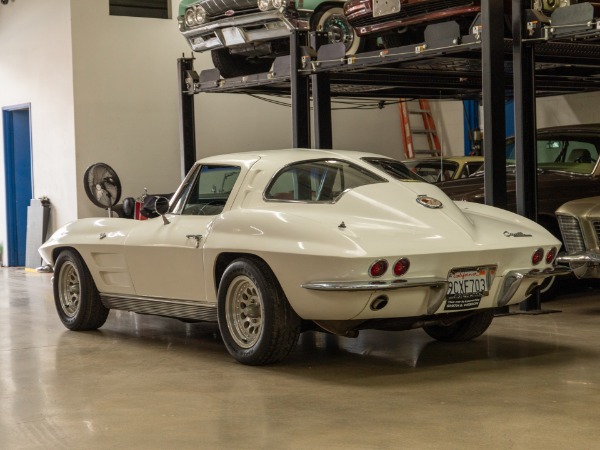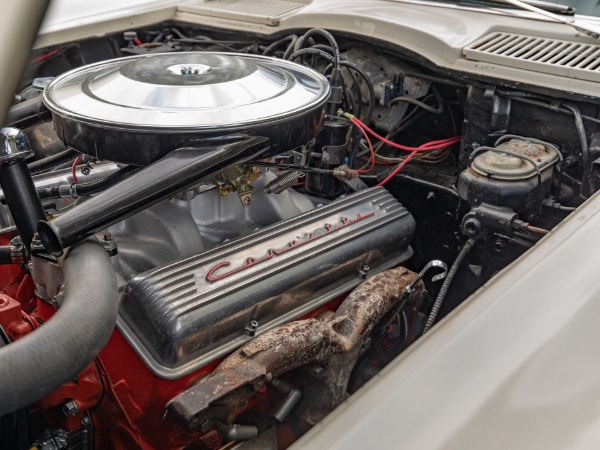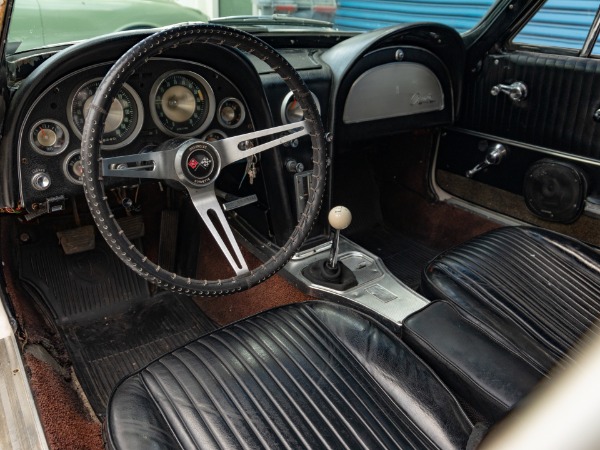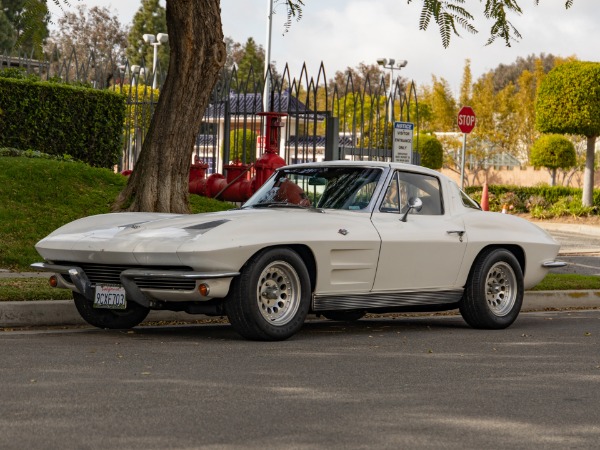CORVETTE SPLIT WINDOW COUPE
The Chevrolet Corvette Split Window Coupe, also known as the Corvette Sting Ray, was a two-seater sports car produced by Chevrolet between 1963 and 1967. It was designed by Bill Mitchell, GM’s Vice President of Styling, and was a radical departure from previous Corvettes in terms of design and engineering. Mitchell served as the Vice President of Styling at General Motors (GM) from 1958 to 1977.
History of a legend
Born on July 2, 1911, in Cleveland, Ohio, he studied at the Cleveland School of Art and the Art Students League in New York. In 1935, Mitchell joined GM’s Cadillac Division as a junior designer and quickly rose through the ranks to become chief designer in 1948. In 1958, Mitchell was appointed as the Vice President of Styling at GM, succeeding Harley Earl. He continued to design and oversee the development of several notable cars, such as the Chevrolet Corvette Stingray and the Pontiac GTO, and was known for his emphasis on styling and performance. Under Mitchell’s leadership, GM’s design studio produced some of the most iconic American cars of the 1960s and 1970s, including the Chevrolet Camaro, Chevrolet Chevelle, Buick Riviera, Oldsmobile Toronado, Cadillac Eldorado and of course, the Corvette Split Window Coupe.
At the heart of the 1963 Corvette coupe’s legacy is the split-window back glass design, which was a result of Bill Mitchell’s love for marine life. He drew inspiration from sea creatures like the stingray and mako shark and incorporated their anatomical features like gills, wings, tails, and spines into his work. For the 1963 split-window Corvette, Mitchell wanted to include a spine-like design element that would divide the back glass into two halves. This element would run uninterrupted from the roof to the rear deck and create a futuristic and aggressive look.
 However, not everyone at GM was immediately on board with Mitchell’s vision for the split window. Some engineers and executives were concerned that it would negatively impact the car’s visibility, especially in low-light or rainy conditions. Despite these concerns, Mitchell remained determined to include the split window in the design.
However, not everyone at GM was immediately on board with Mitchell’s vision for the split window. Some engineers and executives were concerned that it would negatively impact the car’s visibility, especially in low-light or rainy conditions. Despite these concerns, Mitchell remained determined to include the split window in the design.
In the end, Mitchell’s vision won out, and the split window was included in the production version of the 1963 Corvette. The resulting Split Window Coupe was an instant classic, with its sleek and aerodynamic lines and distinctive rear window. However, the split window’s time in the spotlight was short-lived, as it was removed from the design for the 1964 model year due to safety concerns and visibility issues.
If you are interested in this Corvette and others like it click here
 Underneath the hood, the Split Window Coupe had a powerful range of V8 engines, including the legendary 327 cubic inch small block V8 that came in several power outputs, with the top-spec version generating an impressive 360 horsepower. It was a true beast of a machine. The 1964 model year brought a few changes, including the replacement of the split rear window with a one-piece window, which stayed for the rest of the Sting Ray’s production run. Additionally, a new 375 horsepower version of the 327 cubic inch V8 was introduced, and a coupe with a removable hard top became available. Even though the Split Window Coupe was replaced by the C3 Corvette in 1968, it will always remain an iconic model in the history of American sports cars. Collectors and enthusiasts still highly value and seek out well-preserved examples of this masterpiece. This particular 1963 Chevrolet Split Window Sting Ray Corvette appears to have its original, matching # 327 cubic inch V8 engine, and a matching ‘Muncie’ 4-speed manual transmission. The car is finished in its original ‘Ermine White’ color code 936 paint, with an original black vinyl (trim code STD) interior that features an electric clock and AM/FM radio. According to the current specifications, the engine is believed to be the original, with a correct 3782870 casting number for 1963-1964, and a VIN number that matches. However, the suffix code is unfortunately unreadable. The car also features a correct 1963 GM Muncie 4-speed case number 3831704, T-3 headlights that roll up and work perfectly, and a very straight body with proper door to birdcage fitment. Other notable features include manual steering and windows, and the original signal-seeking AM/FM Delco radio, which cost $174.35 at the time. Overall, this Split Window Corvette is a stunning example of a true American classic.
Underneath the hood, the Split Window Coupe had a powerful range of V8 engines, including the legendary 327 cubic inch small block V8 that came in several power outputs, with the top-spec version generating an impressive 360 horsepower. It was a true beast of a machine. The 1964 model year brought a few changes, including the replacement of the split rear window with a one-piece window, which stayed for the rest of the Sting Ray’s production run. Additionally, a new 375 horsepower version of the 327 cubic inch V8 was introduced, and a coupe with a removable hard top became available. Even though the Split Window Coupe was replaced by the C3 Corvette in 1968, it will always remain an iconic model in the history of American sports cars. Collectors and enthusiasts still highly value and seek out well-preserved examples of this masterpiece. This particular 1963 Chevrolet Split Window Sting Ray Corvette appears to have its original, matching # 327 cubic inch V8 engine, and a matching ‘Muncie’ 4-speed manual transmission. The car is finished in its original ‘Ermine White’ color code 936 paint, with an original black vinyl (trim code STD) interior that features an electric clock and AM/FM radio. According to the current specifications, the engine is believed to be the original, with a correct 3782870 casting number for 1963-1964, and a VIN number that matches. However, the suffix code is unfortunately unreadable. The car also features a correct 1963 GM Muncie 4-speed case number 3831704, T-3 headlights that roll up and work perfectly, and a very straight body with proper door to birdcage fitment. Other notable features include manual steering and windows, and the original signal-seeking AM/FM Delco radio, which cost $174.35 at the time. Overall, this Split Window Corvette is a stunning example of a true American classic.
 The C2 Corvette was an instant success, and it helped establish the Corvette as a serious sports car that could compete with European sports cars like the Porsche 911 and the Jaguar E-Type. In its five-year production run, the C2 Corvette sold over 117,000 units, and it remains one of the most iconic and beloved American sports cars of all time.
The C2 Corvette was an instant success, and it helped establish the Corvette as a serious sports car that could compete with European sports cars like the Porsche 911 and the Jaguar E-Type. In its five-year production run, the C2 Corvette sold over 117,000 units, and it remains one of the most iconic and beloved American sports cars of all time.
Looking to simply value or sell, trade or consign your classic 1963 Corvette Split Window? We can help. 310-399-3990 or info@westcoastclassics.com

